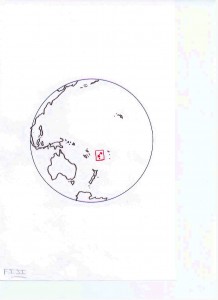FIJI
A. THE COUNTRY
The Sovereign Democratic Republic of Fiji, in the South Pacific Ocean,
has two larger and 110 smaller inhabited islands, both volcanic and
coralline. The government is a Military junta and Parliamentary
Republic with Queen Elizabeth II as Paramount Chief. One of the
Pacific’s most well developed economies, it is based largely on tourism
and sugar. Consistent budget and trade deficits mean that Fiji is one
of the world’s largest per capita recipients of aid. The Indian
community dominates nearly all commercial activities but is hampered by
inability to own land and by systemic racism. This has caused
significant emigration to the detriment of the country.
B. THE PEOPLE
The population is ~854,200 and the official language is English, while
Hindustanic and Bau Fijan are commonly used. Political coups have been
condemned by the global community and resulted in expulsion/suspension
from the Commonwealth as well as sanctions. The ones suffering most
from such actions are the poor of all races.
~36.7% are South Asian, ~52% Fijian, ~11.3% Others.
C. RELIGIONS AND CHRISTIANITY/PENTECOSTALISM
The Methodist Church was formerly the state church and has been tightly
aligned with the nation’s political structure. There’s been accusations
that politics favours Christianity against minority religions.
~65.05% claim to be Christian, ~27.81% Hindu, ~5.7% Muslim, ~0.6%
Non-religious, ~0.53% Sikh, ~0.28% Baha’i, ~0.02% Chinese, ~0.1% Jewish.
In the Christian category:
~45.91% are Protestant, ~11.59% Catholic, ~10.59% Independent, ~0.8%
Anglican. Other groups originating in Western society represent ~2.83%.
Evangelicals represent ~25.2% of the population.
Charismatics represent ~17.5% and of those ~8.2% are Pentecostal groups
that have surged in growth in the last decade.
Donna Siemens
References:
http://en.wikipedia.org
Operation World, Jason Mandryk. Colorado Springs: Biblica Publishing, 2010

